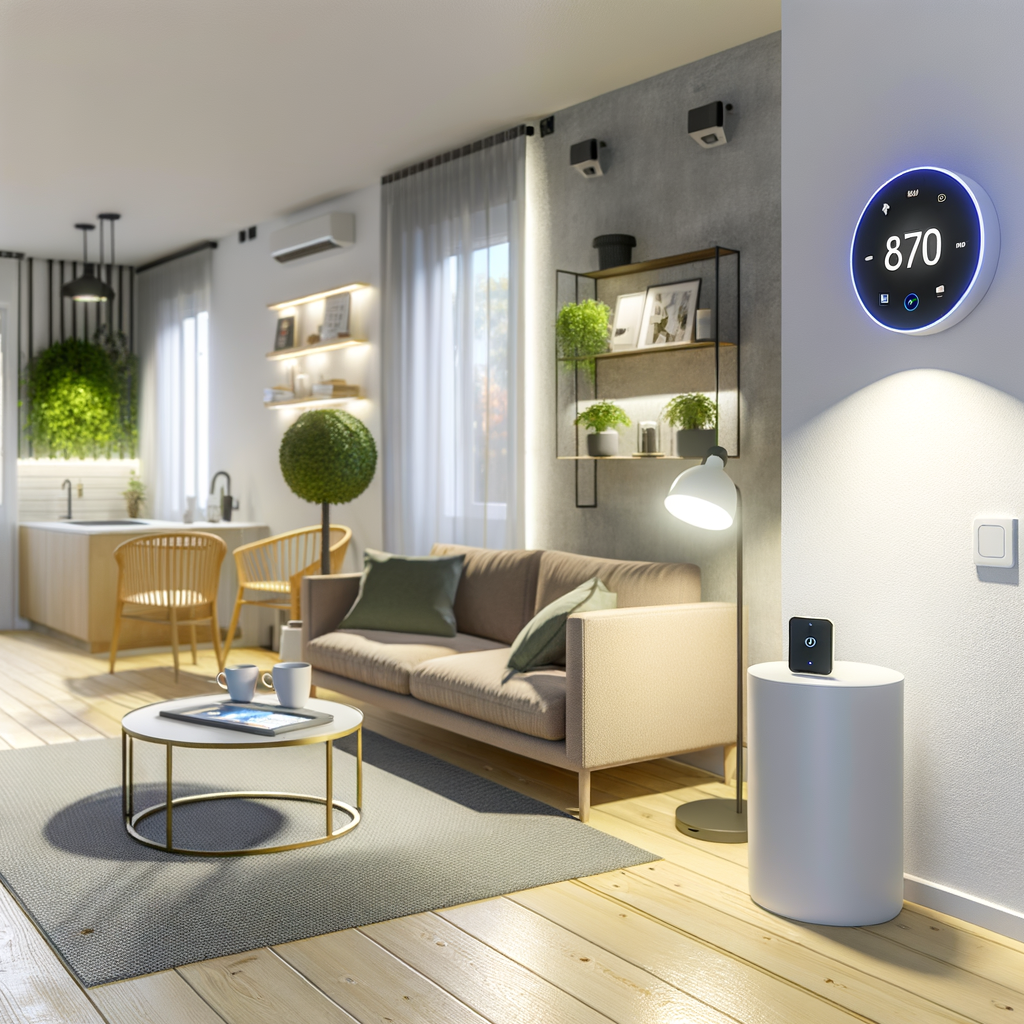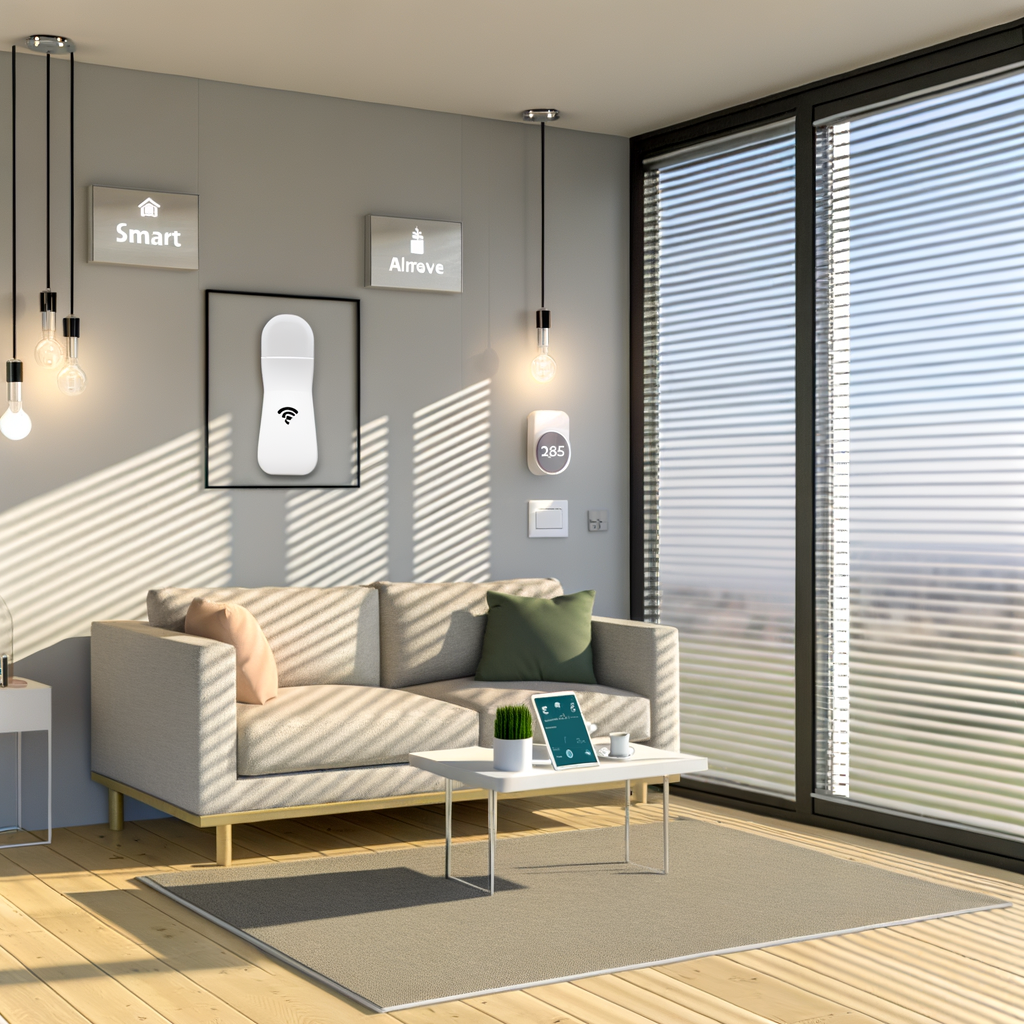Myth-Busting Smart Thermostats: Are They Really Worth It for Renters?
Smart thermostats are among the most talked-about home gadgets of the last decade. But when it comes to renters, there’s a whirlwind of confusion. Do these gadgets really save money and energy? Are they a hassle to install or take with you when you move? Let’s bust some myths and see whether smart thermostats truly deliver value for renters.
What Are Smart Thermostats?
Smart thermostats are Wi-Fi-enabled devices that let you control your home’s heating and cooling from a smartphone or voice assistant. They learn your routines, provide energy reports, and can help reduce energy consumption through automation.
- Remote control: Adjust your thermostat from anywhere via an app.
- Learning ability: Some models observe your routines and adjust settings automatically.
- Energy tracking: Receive reports to monitor your energy use.
- Integration: Many connect with smart home ecosystems like Alexa, Google Assistant, or Apple HomeKit.
Myth 1: Smart Thermostats Are Only for Homeowners
The Reality for Renters
It’s a common belief that smart thermostats are off-limits to renters because of property restrictions. In truth, many renters can benefit from them — with the right approach:
- Permission matters: Always check your rental agreement and ask your landlord before making changes.
- Easy installation: Most smart thermostats are designed for DIY installation, and some require no wiring at all.
- Reversibility: You can usually reinstall the original thermostat before moving out, leaving no trace.
- Portable options: Certain models are designed specifically for renters, making installation and removal a breeze.
Actionable Advice
- Contact your landlord and propose a smart thermostat upgrade. Emphasize benefits like energy savings and no-permanent modifications.
- Choose models known for easy, drill-free installation (see recommendations below).
- Keep the original thermostat in a safe place for reinstallation.
Myth 2: Installation Is Too Complicated for Rentals
How Installation Actually Works
Many renters fear installing a smart thermostat will mean rewiring or damaging the wall. In practice:
- Step-by-step guidance: Most brands provide intuitive instructions and even video guides.
- Screwdriver is usually all you need: In most cases, you’ll only be removing the old unit and attaching the new one using existing wires.
- No-c-wire models: For homes without a ‘common wire’, many smart thermostats work with adapters, or some are battery-powered.
- Painless to reverse: When you move out, simply reinstall the old thermostat.
Tips for a Smooth Installation
- Take a photo of the original wiring for reference.
- Label wires as you remove them for easy reinstallation later.
- Choose a model compatible with your HVAC system (consult the manufacturer’s site or use their compatibility checker).
Myth 3: Smart Thermostats Don’t Really Save Money in Rentals
Do the Savings Add Up?
Another myth is that smart thermostats don’t offer a strong ROI for renters, especially those who don’t plan to stay long-term. However, even in short-term situations, savings can be substantial:
- Energy reduction of 10-23%: Studies have shown smart thermostats can save between 10-23% on heating and cooling bills.
- Immediate feedback: You can quickly see changes in your energy reports and bill amounts.
- Quick payback period: With energy savings, payback could be within a year, making it worthwhile even for renters.
Smart Strategy for Renters
- If you pay your own utilities, you recoup savings directly.
- Even with landlord-paid utilities, automated comfort and remote access add significant non-monetary value.
- Take your smart thermostat with you when you move — keep reaping the benefits.
Myth 4: They’re Not Compatible with Apartment HVAC Systems
Compatibility Challenges
Not all apartments have traditional HVAC systems. However, several smart thermostat manufacturers now design products for various heating and cooling setups.
- Window units and mini-splits: Some smart thermostats can control these via infrared (IR) signals.
- Baseboard heating: Specialized models and “smart controllers” are available.
- Central HVAC: Most models are designed for this, but always check compatibility first.
What to Do as a Renter
- Identify your unit’s HVAC system type (forced air, baseboard, heat pump, etc.).
- Consult compatibility tools on manufacturer websites.
- Explore alternative solutions like smart AC controllers for window units.
Myth 5: Privacy Risks Outweigh the Benefits
Smart, Safe Usage
It’s true that smart thermostats, like all connected devices, collect some data. If privacy is a concern, consider the following:
- Check the privacy policy: Reputable brands clearly outline what data they collect and how it’s used.
- Limit sharing: Most allow you to adjust privacy settings to restrict data access.
- No voice recording: Unlike smart speakers, thermostats do not listen to conversations.
- Use guest networks: Add your smart thermostat to a separate Wi-Fi network for extra peace of mind.
Benefits Unique to Renters
Enjoy Better Comfort and Control
- Remote adjustments: Never come home to a freezing or sweltering apartment again.
- Voice control: Use Alexa, Google, or Siri for hands-free adjustments — perfect for busy lifestyles.
- Set schedules and routines: Maximize comfort without constant manual tweaking.
- Vacation mode: Save energy while you’re away, whether for a weekend or a months-long sublet.
Low-Commitment, High-Impact
- Most smart thermostats are small, unobtrusive, and easily uninstalled.
- Upgrading can increase appeal for future renters and may even increase property value — a plus to mention to landlords.
- If your thermostat provides room-by-room control, you can finally fix issues with uneven heating and cooling common in apartment layouts.
Potential Drawbacks for Renters
Despite many advantages, there are real considerations to be aware of:
- Initial cost: Smart thermostats can be pricey upfront, though prices have dropped and deals are common.
- Landlord approval: Not every landlord is open to even temporary changes.
- Uncommon systems: Some apartments, especially older ones, may have heating/cooling types that limit compatibility.
- Responsibility: You’re on the hook for removing the device and replacing the original at move-out.
How to Get Landlord Approval
Worried your landlord will nix your idea? These tips can help you get a “yes”:
- Highlight safety and efficiency: Explain how smart thermostats enhance property value, safety, and comfort for all tenants.
- Show reversibility: Emphasize that installation is non-damaging and that you’ll restore the original hardware before leaving.
- Provide product information: Offer spec sheets, compatibility notes, and reviews to demonstrate reliability.
- Offer to share energy data: Some landlords may be interested in seeing proof of efficiency gains.
Maximize Your Investment as a Renter
Steps to Make a Smart Thermostat Worthwhile
- Choose a popular,




